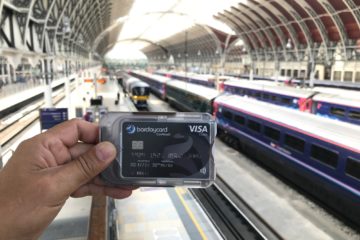Even as far back as 2008 it was known that RFID contactless payment fraud was possible and that there was a way to protect RFID data, unfortunately this wasn’t implemented and bank cards are able to be scanned without the users knowledge and the data captured. It is easy to then reuse that data to make payments.
Original article Materials World magazine 1st Oct 2008
The risk of fraudsters or terrorists hacking into our personal data will reduce if novel ultrathin switches are incorporated into biometric passports and contactless credit cards, says the team at Peratech in Richmond, UK. The technology, made from quantum tunnelling composites (QTCs), would allow the owner to restrict when sensitive information contained in radio frequency identification (RFID) microchips is read by pressing the control as and when needed.
Biometric passports and contactless credit cards are still being rolled out in the UK, but they are increasingly in use elsewhere in the world, such as the USA. The RFID chips and antennae within them hold and disseminate data on detecting a radio signal from a reader. The aim is to eliminate mechanical contacts or magnetic strips that wear away or fail. However, there have been reports that information can be accessed from RFID tags without the owner knowing.
On 8 August, UK national newspaper The Times reported on a test that it had conducted where a computer expert had cloned the microchips in two British passports.
‘Your identity and financial information could be stolen by the person behind you [with a handheld scanner] on the bus, train, in a queue – even walking down the street,’ explains David Lussey, CEO of Peratech.
Philip Taysom, a Director of the company, adds, ‘The American passports are shielded but the British ones are not. [Even then], because of their stiff nature, they open up’.
Under pressure
Quantum tunnelling composites are metal-filled polymeric insulating materials that turn to conductors upon loading or mechanical deformation, such as compression, twisting or stretching. David Lussey discovered this by overloading a polymer. Peratech was born in 1996 to manufacture, explore and commercialise QTCs in a range of applications, from electronic garments to switches in mobile phones.
‘If you look at the [range] of polymers and fillers, we have the ability to choose the formulation,’ explains Taysom. ‘We look at the electromechanical, environmental [behavioural use] and manufacturing requirements.’
In this case, the science has been exploited to formulate a material that only responds to the localised pressure of a finger or thumb. When pressed, it completes the circuit and allows the data to be read. Credits cards, for example, cannot be accidentally ‘switched on’ through pressure applied in a stack of cards in a purse or wallet. The drop in electrical resistance to below one ohm is proportional to the load applied.
To incorporate the material and antennae inside the laminate layer of a card, the QTC has been optimised to withstand heat and pressure during lamination, and ensure flexural toughness for everyday use.
Unlike mechanical switches that rely on parts making contact can get stuck in ATMs, the QTC does not have individual components. The entire material is a switch. Instead, Taysom explains, the composite is ‘thinner than paper’. Switches down to 20µm thick are possible.
The lack of air gaps means the composite does not ingress moisture or liquid, inhibiting damage caused by spillages and extending the device’s operational life.
Ready to roll?
The question now is whether QTCs will be exploited in a range of RFID-based goods. Taysom says that the material is ‘low cost’, but acknowledges there has been ‘resistance’ from manufacturers. ‘I don’t know why’, he says.
A possible answer may be that the designs of the new passports and credit cards have been finalised with billions of pounds invested in them and assurances from the authorities that they cannot be cloned. Peratech says, however, it wants to raise awareness and show that there is a problem with RFID solutions and that it has the solution. ‘We have a material that could give control back to the user,’ insists Taysom.
Further information


